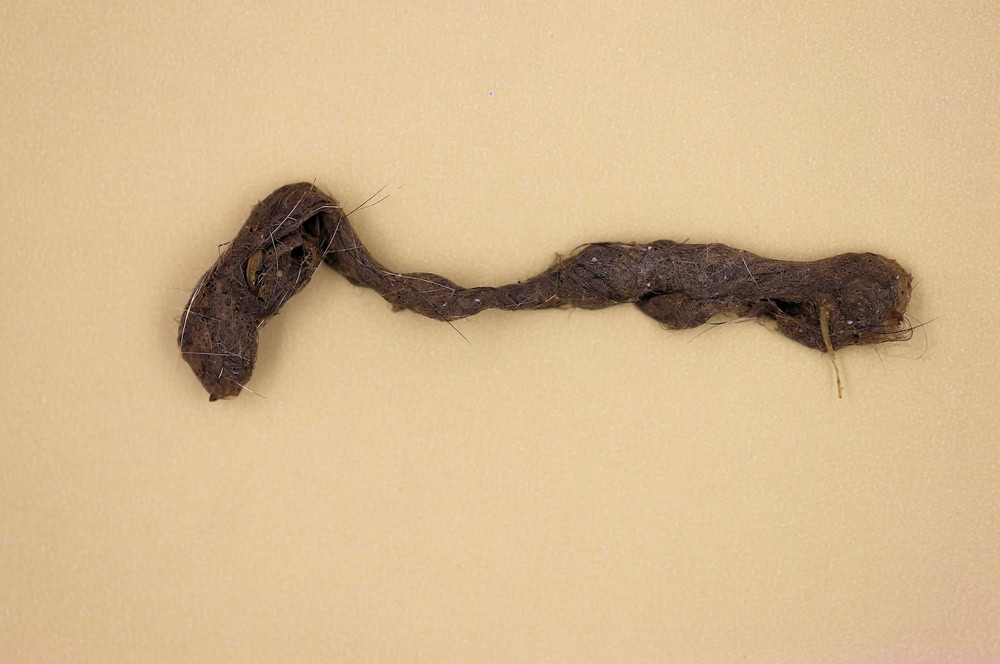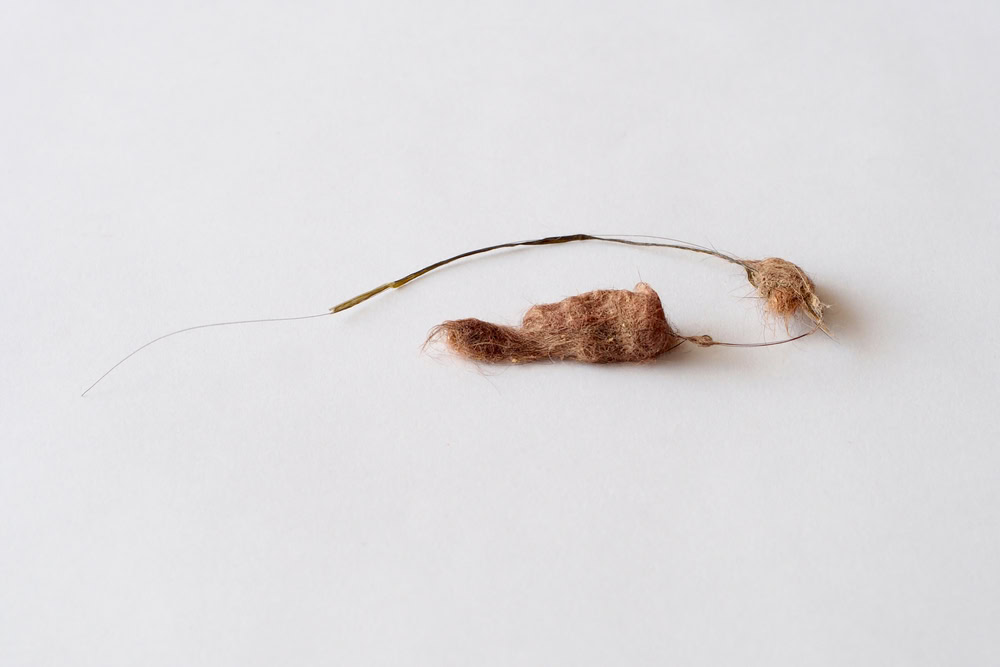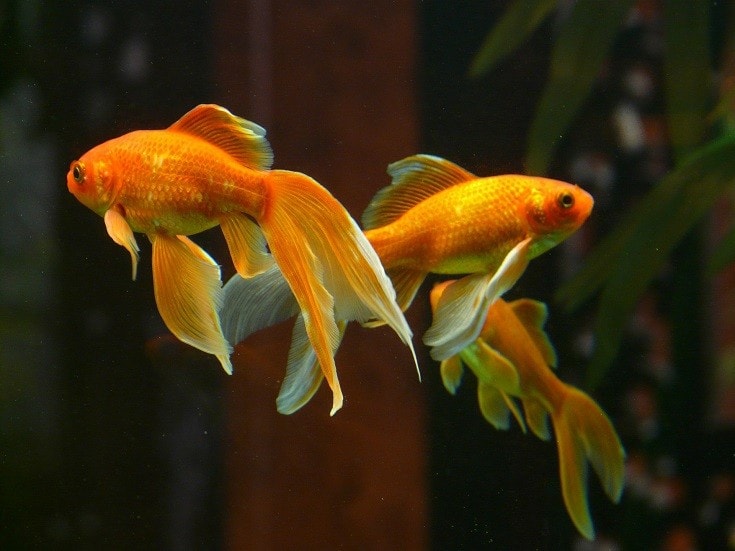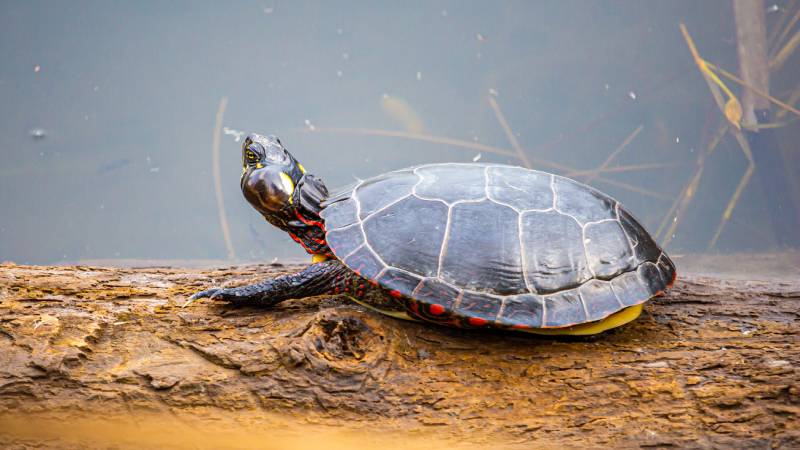VET APPROVED

The information is current and up-to-date in accordance with the latest veterinarian research.
Learn more »Click to Skip Ahead
Hairballs are tube-like masses of fur that your feline friend may throw up from time to time. But don’t be alarmed if your cat vomits up small pieces of fur occasionally — it is normal and not usually a cause of concern. That said, the Cornell Feline Health Center states that “a large clump of ingested hair can block a cat’s intestinal tract and pose a deadly threat.”1
A matted wad of hair can endanger your cat’s health if it grows too large to be vomited back up or to pass through the gastrointestinal tract and exit as feces. A hairball that gets stuck in the small intestine can pose a life-threatening risk, as it can lead to intestinal blockage and require emergency surgery.
In this article, we explain what you need to know about hairballs in cats, when you should be concerned, and how you can help prevent them.

What Are Hairballs in Cats?
The fancy term for a hairball is a trichobezoar, which is basically a damp wad of undigested hair, moistened by bile and other digestive fluids.
Cats clean themselves all the time by licking their fur, but excessive licking can cause more frequent hairballs. Cats will ingest a large amount of hair over time through grooming that is either regurgitated naturally once every week or two or gets stuck in the gastrointestinal tract.
Hairballs can be seen in all cats, regardless of age or breed. However, cats with thick and long coats, such as Persians and Maine Coons, may be more prone to this health problem. Kittens are less likely to get hairballs because they are less efficient at grooming than adults.

The Dangers of Hairballs in Cats
Hairballs can lead to several health problems, including:
- Digestive issues. Hairballs can become lodged in the intestines, leading to discomfort and a potentially life-threatening blockage. If this happens, surgery will be required.
- Vomiting. Due to a hairball causing a blockage or even just irritation to the gastrointestinal tract and the stomach lining without an actual blockage, vomiting is likely to occur.
- Appetite Changes. If your cat is having digestive issues due to hairballs, they are likely to eat less.
- Excessive grooming. If your cat is experiencing anxiety, boredom or stress, they may spend more time grooming themselves, which can lead to more hairballs.
When You Should Be Concerned About Hairballs
A regurgitated hairball once every week or two should not be problematic. However, watch out for the following signs, as they could indicate that a hairball is stuck somewhere in the digestive tract, posing a serious threat to your pet.
Consult your veterinarian right away if you notice one or more of these signs:
- Ongoing vomiting, gagging, or retching, without producing a hairball
- Diarrhea
- Constipation or straining to defecate
- Lethargy
- Refusal to eat
- Frequent cough
- Hard and swollen belly
How to Prevent Hairballs in Cats
If your cat is prone to hairballs, there are a few things that you can do to help prevent the excessive build-up of hair in their gastrointestinal system:
- Brush your cat’s coat daily. Brushing and grooming remove excess fur, which can help prevent hairballs.
- Choose the right diet. There are specific cat foods that may help reduce hairballs.
- Increase water consumption. Water is crucial to the proper functioning of your cat’s digestive system, so make sure they have access to a bowl of fresh, clean water at all times, as well as a cat fountain that may be more successful at encouraging them to drink.
- Give your cat a hairball remedy. Ask your veterinarian to recommend a mild laxative that you can give your cat once or twice a week.


Conclusion
An occasional hairball is normal and not a cause for concern. It’s simply the result of hair accumulating in your cat’s digestive tract due to meticulous grooming. All breeds can get hairballs, although some long-haired breeds are more prone to ingesting excessive amounts of hair while grooming.
However, hairballs can become a serious health risk if they occur too often or get stuck in the cat’s digestive tract. All cat parents should monitor the behavior of their feline friend and be on the lookout for signs indicating that a hairball may be obstructing their stomach or small intestine.
Featured Image Credit: Joon Rungtipa, Shutterstock












